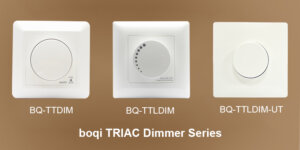Electricity is a powerful tool. It lights up our homes and powers our appliances. But it can also be dangerous if not handled correctly. That’s why understanding wiring conventions, especially the polarity of different wires, is crucial. In this article, we dive into a common question: Is the black wire positive or negative?
Color Coding in Electrical Wiring
Color coding in electrical wiring plays a vital role in ensuring safety and efficiency. Historically, wire colors have helped electricians and DIY enthusiasts quickly identify the function of each wire. While different countries may adopt different standards, some wire colors are universally recognized, ensuring consistency across global electrical systems.
For instance, in most residential and commercial wiring systems in the United States, black wires are commonly used as hot wires. These are the wires that carry power from the electrical panel to the destination—be it a light fixture, outlet, or appliance. This standardization helps to prevent electrical accidents and ensures that any maintenance or repairs can be carried out safely and effectively.
In contrast, European countries often use a different color scheme. For example, in the UK, the live wires are typically brown. This difference in standards can be confusing for those who are used to American wiring conventions. However, knowing the specific wiring colors used in one’s country is crucial for safe electrical practices.
Let’s consider a practical example to illustrate how this knowledge is applied:
Imagine a homeowner attempting to install a ceiling fan. In the U.S., they would expect to connect the fan’s power wire to a black wire from their home’s wiring. If they were in the UK, they would look for a brown wire instead. Knowing the correct color for live wires in their specific location helps prevent the risk of electric shock or faulty installations.
Moreover, neutral wires, which complete the electrical circuit by returning the current to the power source, are typically white in the U.S. and blue in Europe. Ground wires, essential for safety to prevent electrical shock, are usually green or bare copper in the U.S. and green-yellow striped in Europe.
The color of a wire is not just for aesthetics—it signifies its purpose within the electrical system. These colors help maintain consistency and safety across installations. Let’s break down the conventions used in alternating current (AC) and direct current (DC) systems.

AC Wiring Systems
In residential and commercial buildings in the United States, the standard wiring colors are:
- Black Wire: This is the hot or live wire, carrying power from the electrical panel to the appliance or light fixture.
- White Wire: Known as the neutral wire, it returns the power from the appliance back to the electrical panel, completing the circuit.
- Green or Bare Wire: This is the ground wire. It acts as a safety measure, providing a path for electrical current in case of a fault, preventing potential electric shock.
These wires work together in AC systems, where the current flows in alternating directions, making the concept of positive and negative, as known in DC systems, inapplicable.
DC Wiring Systems
In DC systems, like those in vehicles or solar panel setups, wire colors indicate:
- Black Wire: Generally used as the negative wire, it serves as the return path for current back to the power source.
- Red Wire: This wire is positive, carrying power away from the source to the electrical devices.
Understanding these conventions is vital for anyone working with electrical wiring in various technologies, including LED installations.
The Role of the Black Wire in Electrical Systems
The black wire typically carries power to devices. This is true in both homes and bigger buildings. Understanding where the power is coming from can help prevent shocks.
Common Questions and Misconceptions
Let’s address some frequent queries that arise with wiring conventions:
- Is the black wire positive or negative? In DC, the black wire is negative, and in AC, it’s the live or hot wire.
- What are the 3 colored wires in a three-phase connection? These include black, red, and blue for the phases, white for neutral, and green or bare wire for ground.
- Is neutral positive or negative? In AC, neutral is neither positive nor negative as the current alternates; in DC, neutral can often be synonymous with negative.
LED Lighting and Wiring Considerations
LED technology not only offers superior energy efficiency but also requires careful consideration of wiring practices to maximize performance and lifespan:
- Efficiency: LEDs provide more lumens per watt than traditional lighting solutions, making them a cost-effective and environmentally friendly option.
- Wiring for LEDs: Ensuring correct wiring is essential, as improper connections can lead to malfunctions or reduced efficiency.
Safety Precautions and Best Practices
When dealing with electrical wiring, always prioritize safety:
- Turn Off Power: Always ensure the power is off at the main breaker before starting any electrical work to avoid shock.
- Use Proper Tools: Employ insulated tools and wear appropriate protective gear.
- Comply with Local Codes: Familiarize yourself with and adhere to local electrical codes and standards.
How to Test Wire Polarity
You can use a multimeter to test wire polarity. Turn off the power, connect the multimeter to the wires you need to test, and then turn the power back on safely to read the voltage. This tool can tell you which wire is carrying power and which is not.
Professional Advice on Electrical Wiring
Sometimes, the best choice is to call a professional. Electricians have the training to understand complex systems and ensure everything is up to code.
FAQs
– Why is it crucial to identify the polarity of wires?
Knowing which wire is carrying power can prevent electric shocks.
– Can the black wire ever be positive?
Yes, in certain DC setups, the black wire might be used as positive.
– How do other wire colors signify polarity?
Typically, red or brown wires indicate positive polarity, and blue or black wires indicate negative.
– Tips for beginners on electrical wiring safety
Always turn off the power before working on wires.
– What are some resources for learning more about wiring conventions?
Electrical safety manuals, professional electrician blogs, and courses are great resources.
– What are the risks of incorrect wire identification?
Incorrectly identifying wires can lead to short circuits, shocks, and even fires.
Conclusion
Knowing whether the black wire is positive or negative is more than just technical knowledge—it’s a safety measure. Whether you’re a professional electrician, a DIY enthusiast, or just someone trying to understand how your home works, respecting wiring conventions and understanding the basics of electrical polarity are essential.






